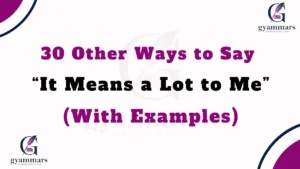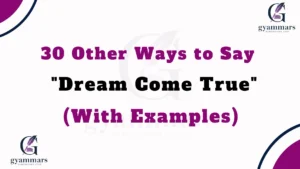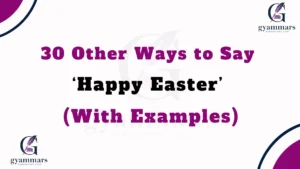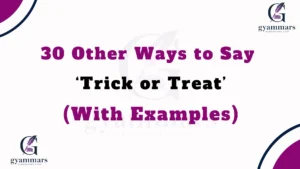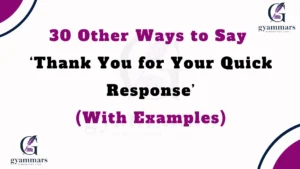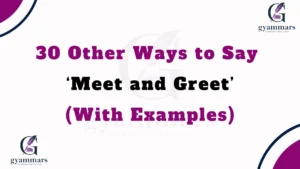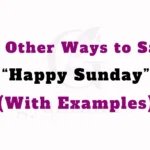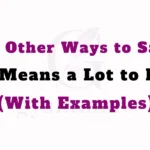When it comes to expressing agreement or approval, finding the right words can make all the difference. Simple phrases like “sounds good” are commonly used, but they can feel a bit impersonal or overused. If you’re looking for a way to communicate more warmth, care, and thoughtfulness, it’s great to have a variety of alternatives at your disposal.
These phrases allow you to personalize your communication, adding layers of meaning and connection to your messages. Whether you’re texting a friend or having a conversation with a colleague, this list will help you express yourself in a more intentional way.
What Does “Sounds Good” Mean?
“Sounds good” is an expression typically used to show agreement, approval, or enthusiasm about a suggestion or idea. It’s a way of acknowledging that something is agreeable, acceptable, or pleasant to you. It is often used in both casual and formal settings to express a positive response.
Is It Professional/Polite to Say “Sounds Good”?
“Sounds good” is generally considered polite in informal and semi-formal conversations. However, in a strictly professional setting, it may sound a little too casual or lacking in depth. Depending on the context, it can be perfectly acceptable, but when you want to sound more professional, you might consider other alternatives.
Pros and Cons of Using “Sounds Good”
Pros:
- Simple and quick to use.
- Works well in casual settings.
- Easy to understand and commonly accepted.
Cons:
- Can sound impersonal or generic.
- Overuse can make your communication feel robotic.
- May not be formal enough for certain professional settings.
Synonyms for Sounds Good
- That works for me
- I’m on board with that
- That sounds perfect
- I’m happy with that
- Sounds great
- I’m in
- I like that idea
- Count me in
- That works for me just fine
- That’s exactly what I was thinking
- Perfect!
- I’m down for that
- I agree
- I’m all for it
- Absolutely!
- That’s fine with me
- Looks good to me
- That’s a good plan
- I’m game
- I’m all in
- I’m cool with that
- Sounds amazing
- Great idea!
- That fits
- I’m up for it
- I’m all about it
- That works out well
- I’m okay with that
- Works for me
- I couldn’t agree more
1. That works for me
Definition: An expression of agreement or acceptance.
Explanation: This phrase is a more personal way of saying “sounds good.” It conveys that the suggestion or plan aligns with your preferences or is acceptable to you.
Scenario Examples:
- Friend: “Let’s meet at 3 PM.”
- You: “That works for me!”
Best Use: When you’re confirming plans or agreeing to something in a personal conversation.
Tone: Friendly, casual, agreeable.
Additional Notes: Great for casual exchanges with friends or family.
2. I’m on board with that
Definition: A way of saying you are in agreement and fully supportive of a plan or idea.
Explanation: This phrase adds a sense of enthusiasm and active participation. It suggests not only agreement but also readiness to go along with the plan.
Scenario Examples:
- Colleague: “Let’s implement this strategy next week.”
- You: “I’m on board with that!”
Best Use: In collaborative or group settings, where you want to show commitment and enthusiasm.
Tone: Positive, supportive.
Additional Notes: Great for work or team-related conversations.
3. That sounds perfect
Definition: A way of expressing strong approval of a plan or idea.
Explanation: Using “perfect” elevates your agreement and shows that you think the suggestion is ideal.
Scenario Examples:
- Friend: “How about pizza for dinner?”
- You: “That sounds perfect!”
Best Use: When you’re genuinely enthusiastic about the plan or suggestion.
Tone: Enthusiastic, appreciative.
Additional Notes: Can be used for both personal and professional settings.
4. I’m happy with that
Definition: A more relaxed and content form of agreement.
Explanation: This expression shows that you are pleased with the proposal and are willing to go along with it.
Scenario Examples:
- Colleague: “How does this schedule work for you?”
- You: “I’m happy with that!”
Best Use: When you want to express contentment and ease.
Tone: Relaxed, agreeable.
Additional Notes: Useful in both professional and personal settings.
5. Sounds great
Definition: Another way to express approval or excitement about an idea.
Explanation: This is a slightly more enthusiastic version of “sounds good.” It conveys positivity and shows you’re looking forward to something.
Scenario Examples:
- Friend: “Let’s catch a movie this weekend!”
- You: “Sounds great!”
Best Use: Casual settings, especially when you’re excited about the plan.
Tone: Positive, excited.
Additional Notes: A great option for light-hearted and friendly conversations.
6. I’m in
Definition: A simple, casual way to agree or commit to something.
Explanation: This phrase indicates that you’re fully committed to the plan, and it adds a bit of enthusiasm.
Scenario Examples:
- Friend: “Join us for a hike tomorrow?”
- You: “I’m in!”
Best Use: When you want to show excitement and commitment.
Tone: Casual, enthusiastic.
Additional Notes: Often used in personal conversations.
7. I like that idea
Definition: A way of showing appreciation for a suggestion.
Explanation: This expression conveys that you not only approve of the idea but also find it appealing.
Scenario Examples:
- Colleague: “How about a team-building retreat?”
- You: “I like that idea!”
Best Use: To show you’re genuinely fond of the idea or suggestion.
Tone: Positive, appreciative.
Additional Notes: Works well in both professional and casual settings.
8. Count me in
Definition: A more enthusiastic way of saying you want to be a part of the plan or suggestion.
Explanation: This is a strong commitment to participating and shows that you’re excited about the idea.
Scenario Examples:
- Friend: “We’re all going to the concert next month.”
- You: “Count me in!”
Best Use: When you’re eager to join and commit to something.
Tone: Excited, committed.
Additional Notes: Best for informal, fun settings with friends or family.
9. That works for me just fine
Definition: A slightly more emphatic way to agree or accept.
Explanation: This version adds a bit more confidence to your acceptance and assures the other person that everything is satisfactory.
Scenario Examples:
- Colleague: “I think we should have the meeting at noon tomorrow.”
- You: “That works for me just fine.”
Best Use: When you want to show a bit more confidence in your agreement.
Tone: Calm, agreeable.
Additional Notes: Appropriate for both formal and informal situations.
10. That’s exactly what I was thinking
Definition: A way to express that the idea or suggestion aligns perfectly with your own thoughts.
Explanation: This expression reinforces that the suggestion was something you were already considering, adding a layer of connection.
Scenario Examples:
- Friend: “We should take a day trip this weekend.”
- You: “That’s exactly what I was thinking!”
Best Use: When the suggestion mirrors your own ideas or plans.
Tone: Surprised, connected.
Additional Notes: Adds a feeling of shared understanding.
11. Perfect!
Definition: A quick, enthusiastic way to express strong agreement.
Explanation: This word conveys that the idea or plan is exactly what you wanted or expected. It’s short but effective in showing enthusiasm.
Scenario Examples:
- Friend: “I’ll pick you up at 6 PM.”
- You: “Perfect!”
Best Use: When you’re fully satisfied with the plan.
Tone: Enthusiastic, positive.
Additional Notes: Works well in both professional and casual conversations.
12. I’m down for that
Definition: A casual and friendly way of saying you’re open to a plan.
Explanation: This phrase is often used informally to show agreement or willingness to participate.
Scenario Examples:
- Friend: “Let’s go on a road trip this weekend.”
- You: “I’m down for that!”
Best Use: When you want to show excitement for a fun plan.
Tone: Informal, energetic.
Additional Notes: Best used in social settings, not in professional emails.
13. I agree
Definition: A direct way to express agreement.
Explanation: This phrase is neutral and can be used in both casual and professional settings to show that you share the same opinion.
Scenario Examples:
- Colleague: “This strategy will help us meet our goals.”
- You: “I agree.”
Best Use: When you want to keep your response simple and clear.
Tone: Neutral, professional.
Additional Notes: Suitable for serious discussions and work environments.
14. I’m all for it
Definition: A phrase that expresses strong support or approval.
Explanation: This suggests that you are not just in agreement, but actively excited about the idea.
Scenario Examples:
- Friend: “We should start a weekend book club.”
- You: “I’m all for it!”
Best Use: When you want to express enthusiasm and approval.
Tone: Encouraging, supportive.
Additional Notes: Works well in personal and motivational conversations.
15. Absolutely!
Definition: A firm and enthusiastic way to express agreement.
Explanation: This word shows strong affirmation and adds confidence to your response.
Scenario Examples:
- Colleague: “Can you help me with this project?”
- You: “Absolutely!”
Best Use: When you want to sound confident and encouraging.
Tone: Strong, enthusiastic.
Additional Notes: Great for both work and casual conversations.
16. That’s fine with me
Definition: A polite and neutral way of agreeing to something.
Explanation: This phrase shows that you are okay with the suggestion without sounding overly enthusiastic.
Scenario Examples:
- Friend: “Can we meet at 4 instead of 3?”
- You: “That’s fine with me.”
Best Use: When you are indifferent but agreeable to a change.
Tone: Neutral, accommodating.
Additional Notes: Works well in professional settings when confirming minor details.
17. Looks good to me
Definition: A slightly informal but polite way to approve something.
Explanation: This phrase is commonly used in work settings when reviewing documents, ideas, or plans.
Scenario Examples:
- Colleague: “I’ve made the edits you requested.”
- You: “Looks good to me!”
Best Use: When approving something in a work or review process.
Tone: Casual, professional.
Additional Notes: Often used in workplace emails and feedback.
18. That’s a good plan
Definition: A way of showing approval while also emphasizing the quality of the idea.
Explanation: This phrase helps acknowledge a well-thought-out suggestion and validates the other person’s input.
Scenario Examples:
- Friend: “Let’s wake up early to avoid traffic.”
- You: “That’s a good plan.”
Best Use: When acknowledging someone’s idea in a respectful way.
Tone: Thoughtful, positive.
Additional Notes: Useful for both casual and professional settings.
19. I’m game
Definition: A fun and casual way of saying you’re interested or ready to participate.
Explanation: This phrase is lighthearted and is used when someone is excited about an opportunity or event.
Scenario Examples:
- Friend: “Want to join the volleyball game later?”
- You: “I’m game!”
Best Use: When responding to fun invitations.
Tone: Playful, energetic.
Additional Notes: Best for informal settings with friends.
Read More: 30 Other Ways to Say ‘Safe Travels’ (With Examples)
20. I’m all in
Definition: A strong commitment to an idea or plan.
Explanation: This phrase shows full dedication and excitement, often used in motivational or team settings.
Scenario Examples:
- Friend: “Let’s train for a marathon together.”
- You: “I’m all in!”
Best Use: When you want to show enthusiasm and full commitment.
Tone: Confident, encouraging.
Additional Notes: Can be used in both personal and team-related discussions.
21. I’m cool with that
Definition: A relaxed way of expressing agreement.
Explanation: This phrase is laid-back and casual, showing that you’re fine with the decision.
Scenario Examples:
- Friend: “Let’s take the bus instead of driving.”
- You: “I’m cool with that.”
Best Use: When you want to sound easygoing.
Tone: Chill, informal.
Additional Notes: Best used among friends rather than in professional settings.
22. Sounds amazing
Definition: A more enthusiastic version of “sounds good.”
Explanation: This phrase adds excitement and shows strong approval.
Scenario Examples:
- Friend: “We’re going on a weekend trip!”
- You: “Sounds amazing!”
Best Use: When you want to express high enthusiasm.
Tone: Excited, appreciative.
Additional Notes: Great for personal and celebratory conversations.
23. Great idea!
Definition: A way to compliment and agree with someone’s suggestion.
Explanation: This phrase validates someone’s input and adds encouragement.
Scenario Examples:
- Colleague: “Let’s automate this process to save time.”
- You: “Great idea!”
Best Use: When giving positive feedback.
Tone: Encouraging, positive.
Additional Notes: Suitable for both casual and professional discussions.
24. That fits
Definition: A phrase to express agreement while highlighting suitability.
Explanation: This is often used when discussing schedules, plans, or solutions that match expectations.
Scenario Examples:
- Colleague: “Does Friday work for the meeting?”
- You: “That fits.”
Best Use: When confirming a plan that aligns well.
Tone: Neutral, professional.
Additional Notes: Good for work-related conversations.
25. I’m up for it
Definition: A phrase showing willingness and enthusiasm.
Explanation: This phrase is used when you’re ready and excited for an activity.
Scenario Examples:
- Friend: “Want to go hiking tomorrow?”
- You: “I’m up for it!”
Best Use: When showing willingness for something fun.
Tone: Excited, casual.
Additional Notes: Best for friendly discussions.
26. I’m all about it
Definition: A strong way to express enthusiasm and commitment to an idea.
Explanation: This phrase shows that you not only agree with something but are also passionate about it.
Scenario Examples:
- Friend: “Let’s start meal prepping together.”
- You: “I’m all about it!”
Best Use: When you’re highly enthusiastic about an idea.
Tone: Excited, engaged.
Additional Notes: Works well in personal and motivational conversations.
27. That works out well
Definition: A phrase used to express agreement while emphasizing convenience or suitability.
Explanation: This phrase is great when a suggestion aligns well with your schedule or plans.
Scenario Examples:
- Colleague: “Can we schedule the meeting for 2 PM?”
- You: “That works out well.”
Best Use: When confirming plans that fit your needs.
Tone: Neutral, professional.
Additional Notes: Useful for both personal and business settings.
28. I’m okay with that
Definition: A polite and neutral way of expressing acceptance.
Explanation: This phrase shows that you are fine with the decision without being overly enthusiastic.
Scenario Examples:
- Friend: “Do you mind if we eat at a different restaurant?”
- You: “I’m okay with that.”
Best Use: When you want to be agreeable but not overly excited.
Tone: Neutral, accommodating.
Additional Notes: Suitable for both professional and personal conversations.
29. Works for me
Definition: A short and simple way to express agreement.
Explanation: This phrase is a casual way of saying you’re fine with something.
Scenario Examples:
- Friend: “Let’s meet at the café at noon.”
- You: “Works for me.”
Best Use: When you want to confirm a plan in an easy-going manner.
Tone: Casual, relaxed.
Additional Notes: Best for informal conversations with friends or colleagues.
30. I couldn’t agree more
Definition: A strong and formal way of showing full agreement.
Explanation: This phrase emphasizes that you completely agree with someone’s opinion or suggestion.
Scenario Examples:
- Colleague: “Improving customer service should be our top priority.”
- You: “I couldn’t agree more.”
Best Use: When you want to strongly affirm your agreement.
Tone: Formal, enthusiastic.
Additional Notes: Works best in professional or serious discussions.
Conclusion
Finding the right words to express agreement can make your conversations feel more thoughtful and engaging. Whether you want to sound professional, casual, or enthusiastic, these alternatives give you the flexibility to match the tone and context of any situation. Next time you’re about to say “sounds good,” try one of these phrases to add warmth and personality to your responses! 😊
FAQ:
1. Why should I use alternatives to “sounds good”?
Using alternatives to “sounds good” can help make your communication more personal, thoughtful, and engaging. It allows you to better express your emotions, tone, and level of enthusiasm based on the context and the relationship you have with the person you’re communicating with.
2. Are these alternatives formal or informal?
The alternatives provided range from casual to formal. Phrases like “I’m down for that” or “I’m game” are best used in informal settings, while others like “I agree” or “I couldn’t agree more” are more suited for professional or formal conversations. You can choose the one that best fits the situation.
3. Can these phrases be used in professional settings?
Yes, some of these phrases, like “I agree,” “That works for me,” and “I’m on board with that,” are suitable for professional environments. However, you may want to avoid very casual alternatives like “I’m game” or “I’m cool with that” in formal business discussions.
4. How can I decide which phrase to use?
The best phrase to use depends on the tone of the conversation, the level of enthusiasm you want to convey, and the formality of the setting. For casual or personal interactions, go with something more relaxed like “Sounds great” or “I’m in.” For work or serious situations, try “I agree” or “That’s fine with me.”
5. Can these alternatives replace “sounds good” in all situations?
While these alternatives are great for replacing “sounds good,” it’s important to consider the context. Some may be too informal or enthusiastic for certain conversations, so choose the one that aligns best with the message you want to convey.

“Emma Brooke at Grammar Synonyms is your trusted source for mastering the art of language. Whether you’re looking for the perfect synonym, refining your grammar, or searching for that one ideal phrase, we’ve got you covered. With a wealth of tools and resources, Emma Brooke brings you creative solutions for all your writing needs, making sure your words always hit the mark. Unlock a world of language possibilities and elevate your writing with ease.”


